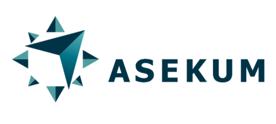
1. What is cognitive RPA?
Answer: It is an extension of RPA that allows the robot to work effectively in situations that go beyond strictly defined patterns. It uses artificial intelligence solutions, thanks to which robots are able to cope with more difficult challenges. The introduction of cognitive RPA, i.e. Cognitive capabilities extend the range of activities that have so far been performed within ordinary RPA.
2. What is RSO?
Answer: RSO or Robotic Service Orchestration is a solution that helps manage the interactions of automated robot processes and human work. It allows you to define even very complex processes and dependencies between them, and thus respond to multi-element business challenges.
3. What is PoC?
Answer: PoC is the so-called Proof of Concept – a short-term campaign whose main goal is to prove the validity of the use of automation of a certain business process in a given company. An important element of PoC is the obligation to present the benefits of implementing robotics that meet customer expectations.
4. How is RPA different from RDA?
Answer: RPA is a solution for automating business processes. On the other hand, RDA is a method aimed at automating the sequence of tasks performed at one workstation. RDA is also called a supervised type of RPA, which means that while working, the robot, encountering unusual situations, may ask for support from an employee.
5. Is the robot able to learn?
Answer: Most often, the robot operates on the basis of a human-made algorithm, so it has no possibility of learning and self-awareness. Most recognized robotic platforms also offer the possibility of creating so-called cognitive robots that can benefit from machine learning. However, these technologies still have quite limited possibilities.
6. Will adding robotic solutions to the company help us getting rid of other IT systems?
Answer: Robots work on applications – they do not replace them, therefore the implementation of robots in the organization will not allow for getting rid of other IT systems.
7. How does the robot connect to data, are they only in the company or are they also outsourced?
Answer: In any case, the data controller remains their owner. The robots only use the data for the execution of the process and in most cases they are not stored afterwards. Of course, before starting robotization, a data confidentiality clause is always signed.
8. Is one robot one license?
Answer: A separate license is needed for each robot working at the same time, just like a separate computer is needed for each employee. However, there are no obstacles for the next robot to start working under the same license when the previous one completes its tasks, also similarly to employees who can share equipment, e.g. during shift work.
9. Can you combine e.g. 5 robots that do small things into one big robot?
Answer: It is possible to combine 5 robots into one large one, but keep in mind that it can be extremely labor-intensive and simply unprofitable. Such a complex robot is much more susceptible to changes, and thus much more expensive to maintain.
10. Can one robot handle processes in different systems, in different locations, within 1 FTE?
Answer: Yes, as long as it appears from the standard that all the activities to be robotic will fit into the mentioned 1 FTE.
11. How do robots deal with Citrix?
Answer: The current version of BluePrism allows the robot to collaborate with Citrix on the basis of images, but it is an extremely time-consuming and often unprofitable process. One graphic change is enough and the whole process will need updating and improvement.
12. Are there applications that are difficult to robotize?
Answer: The vast majority of applications, even those based on the oldest technologies, can be robotized without any problems. Remote desktop based applications can be a challenge, because image recognition must rely on image recognition, which means they are more susceptible to even minor changes. This may translate into higher maintenance costs for robots.





